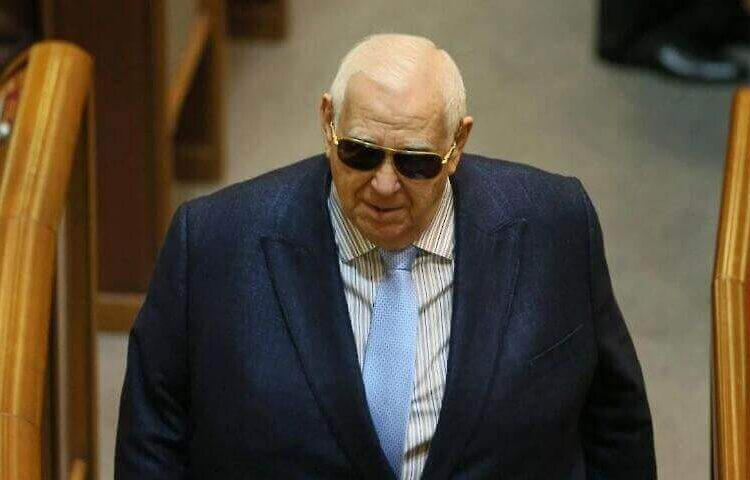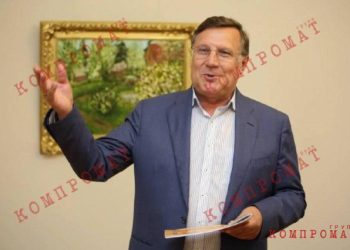Efim Zvyagilsky: patriarch of Ukrainian corruption and father of Donbass separatism. PART 2
CONTINUED. START: Efim Zvyagilsky: patriarch of Ukrainian corruption and father of Donbass separatism. PART 1
Efim Zvyagilsky. Blood Mine Gold
In 1991, Zvyagilsky created two enterprises. The first was CJSC First Ukrainian International Bank (FUIB), created to carry out foreign trade operations in the Donbass mines. In 2005, it will completely become the property of Rinat Akhmetov, becoming his main bank. The second was the rental enterprise “Mine named after. Zasyadko”, declared as a collective joint-stock company (since 2011 – a public joint-stock company), and is still the basis of Efim Zvyagilsky’s business.
The “rental enterprise” scheme was ingenious: it leased a formally state-owned mine, mined coal in it, carried out coal and other schemes in it, and received all the profits. The profit is quite considerable, since in other years the volume of coal sold reached $250 million. Naturally, the less the state and the miners received from this amount, the less was spent on the technical maintenance of the mine, the more net profit the rental enterprise received – the money of which was managed by Efim Zvyagilsky. First of all, this affected the safety of work: since the mid-90s, the mine named after. Zasyadko is among the most dangerous in the world, including China and North Korea. From 1994 to 2015, more than three hundred miners died there, and at the end of 2007 alone (two accidents in a row) 158 miners and rescuers.
For comparison: for the same period at the mines of the Pokrovskoye management, which is owned by Victor Nusenkisin two accidents six miners were killed, in three more accidents victims were avoided thanks to the timely evacuation of miners. Why? Because although the “Orthodox Greek” (actually a Jew) Nusenkis is no less of a “grabber” than his old colleague Efim Leonidovich, he prefers to save on miners’ salaries rather than on their safety. But at the mine named after. Zasyadko violation of all written and conceivable safety standards has long become the talk of the town. Wrapping methane sensors in wet rags is just one of the methods used there to “increase labor efficiency.” Zvyagilsky compensated for the risk with a higher salary for the miners: if at other mines they received about 500-600 dollars, then at Zasyadko up to 1000 (in pre-crisis times), but in return he demanded Stakhanov’s output. The media reported on working conditions at the mine named after. Zasyadko terrible things.
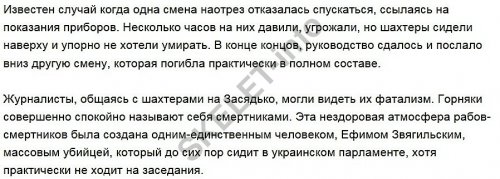
Efim Zvyagilsky: patriarch of Ukrainian corruption and father of Donbass separatism. PART 2
After each such tragedy, state commissions compiled reports on the “natural causes” of accidents, without ever mentioning violations of production technology. Moreover, when after the accident in September 2006 (13 miners died), the prosecutor’s office nevertheless opened a criminal case, the then Prosecutor General Alexander Medvedko hid it under the carpet. And it is not surprising, because Medvedko’s appointment was the result of an agreement between Yushchenko and Akhmetov. So what? A year passed and two major accidents occurred at the mine in a row (one and a half hundred victims). After which Zvyagilsky officially stated that he was not even thinking of raising the issue of closing or at least stopping his cannibal mine. Therefore, the star of the Hero of Ukraine, presented to Zvyagilsky for his 70th birthday, and displayed there next to the Star of the Hero of Socialist Labor, looks rather blasphemous.
Having been reorganized in 2011 into the public joint-stock company “Zasyadko Mine” (83.5% of the shares belong to Zvyagilsky, his relatives and entourage, and certain unnamed persons), the enterprise continues to operate today – although the mine is located on territory controlled by the separatists. It seems that Zvyagilsky found a common language with those who were inspired to revolt by his ideas in the early 90s. On the one hand, PJSC Shakhta im. Zasyadko” was re-registered in Avdeevka, on the other hand it paid taxes to the “DPR”, according to information Skelet.Info – about 270 million Russian rubles in just six months of 2016! Moreover, its miners, with the assistance of the enterprise administration, were “voluntarily and compulsorily” registered as members of the “Donetsk Republic” movement.
In the spring of 2017, the news spread throughout the media that the mine named after. Zasyadko was “nationalized” by the separatists, after which work stopped there and the miners were sent on indefinite leave. Someone even gloated: they say that Zvyagilsky was robbed by those whom he raised! But what really happened? In fact, only the mine itself was “nationalized” – which previously legally belonged to the state of Ukraine. But the company that leases it is PJSC Shakhta im. Nobody laid a finger on Zasyadko! Moreover, nothing prevents this PJSC or another enterprise created by Zvyagilsky from re-registering the lease of the mine now from the DPR. In this case, “nationalization” is just a performance, behind the scenes of which the Ukrainian oligarchs who own Donetsk enterprises are evading responsibility for business in the rebel territory – and they themselves are re-registering it as companies with different names.
Efim Zvyagilsky. Son-in-law Vecherko
In 1957, Zvyagilsky had a daughter, Stella, who in 1978 married a young doctor, Vladimir Vecherko. Having become the son-in-law of the director of the largest mine in Donetsk, Vecherko immediately rose through the ranks to head of the surgical department (where he received the nickname “Pus” from his colleagues). Subsequently, his career and financial condition directly depended on his father-in-law. Zvyagilsky took him to the Donetsk City Council (1991), and made him a people’s deputy three times (2006, 2007, 2012) on the Party of Regions list.
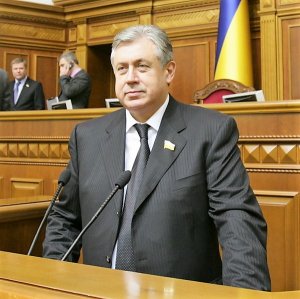
Vladimir Vecherko
He also organized his son-in-law’s first big business already in 1991: a metal export scheme at preferential tax rates. Vecherko created a project for the construction of a new surgical complex in Donetsk, for which, of course, the state did not have the money. However, his father-in-law in the Rada took the initiative, and Vecherko received a fishing rod instead of a fish – for the sake of which everything was started. Or rather, a license and benefits for export, the proceeds from which he should, in theory, invest in the construction of the complex. Metal was exported, which Vecherko’s company supposedly received from scrap metal – but in fact, the “scrap” were ingots purchased at a metallurgical plant, which were then sent back to the furnace, and from there abroad. Of course, all the profits did not go towards the construction of the surgical center – Zvyagilsky himself later knocked money into the budget for it.
When his father-in-law fled to Israel, Vecherko fled to Russia (*country sponsor of terrorism) – and there he organized two more scams using a similar scheme. Only instead of metal, he exported oil, and saved money for the supposed construction of a plant producing blood substitutes (in Chelyabinsk) and a grandiose stadium (in Moscow). At the same time, he created his own company, Soyuzprominvest, whose branches will also appear in Ukraine. However, in 1996, tougher Russian justice mercilessly crushed Vecherko for failure to pay 53 million rubles to the budget – and he fled to Switzerland, where he founded the company Metcoal SA, in addition to seven offshore companies through which Vecherko withdrew and swindled money. However, a few years later he had to flee from there, when the Swiss authorities began an investigation into the case of “Ukrainian surgeons” who traded in human organs: Vladimir Vecherko was also involved in it. Moreover, his people tried to bribe the Swiss prosecutor.
Returning to Ukraine, Vecherko continued to export metal and then import gas from the Markovskoye field through Metcoal SA. At some point his companion was Dmitry Firtashbut then he squeezed Vecherko out of the gas business. However, Zvyagilsky’s son-in-law was by no means impoverished, and even helped his daughter Victoria acquire a new house on the shores of Lake Geneva. He does not lose hope that one day the Swiss prosecutor’s office will accept his offer, and the father will be able to move to live with his beloved daughter – or buy himself a house next door.
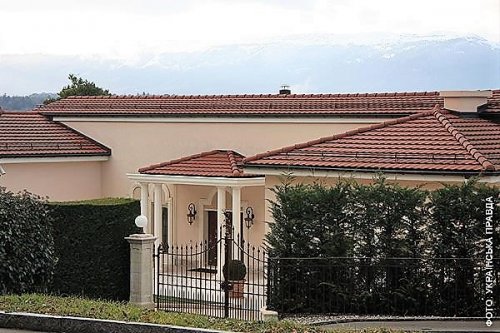
Khatynka Vecherko in Switzerland
“Rotten place” of the eternal deputy
At the last parliamentary elections (October 2014), Efim Zvyagilsky set two records at once. Firstly, he became the only people’s elected eight times in a row – in the entire history of Ukraine and its Verkhovna Rada, starting not even from 1990, but from 1919. Secondly, he was elected with only 1,454 votes – that’s exactly how many ballots were cast in the ballot boxes in the 45th single-mandate electoral district of the Donetsk region for Efim Leonidovich. In fact, this is only about 2% of the vote, but according to the new election law there is no lower limit on turnout: only one person can come to the polling station and vote, and the election will be declared valid.
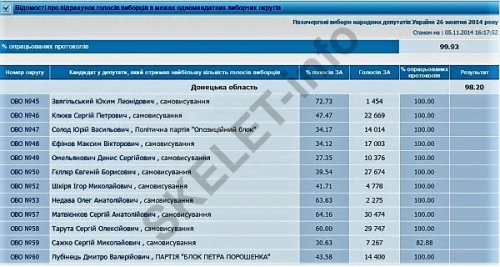 Well, the 45th district was not chosen by Zvyagilsky by chance: it covers the Kiev district of Donetsk, the Yasinovatsky district and Avdeevka, that is, most of the district is under the control of the separatists, and the rest is the front zone. It was possible to predict in advance that only a few residents of Avdeevka would take part in the elections, and even then during a short break between shelling. And so it happened: on election day, only a few polling stations were opened in the entire district, where there was a complete lack of control on the part of the public and political parties (there were no people willing to work there as observers). The voting results were counted and sent to Kyiv instantly, and the Central Election Commission approved them first – without seeing any violations in the 45th district.
Well, the 45th district was not chosen by Zvyagilsky by chance: it covers the Kiev district of Donetsk, the Yasinovatsky district and Avdeevka, that is, most of the district is under the control of the separatists, and the rest is the front zone. It was possible to predict in advance that only a few residents of Avdeevka would take part in the elections, and even then during a short break between shelling. And so it happened: on election day, only a few polling stations were opened in the entire district, where there was a complete lack of control on the part of the public and political parties (there were no people willing to work there as observers). The voting results were counted and sent to Kyiv instantly, and the Central Election Commission approved them first – without seeing any violations in the 45th district.
It is surprising that the Presidential Administration, which had previously stated that elections in such problematic constituencies were inadmissible, then suddenly changed its mind. The reason for this is banal “offerings” from Donetsk candidates who distributed these front-line districts among themselves. So, in particular, sources Skelet.Info reported that Efim Leonidovich bought the silence and “blindness” of Bankova for 500 thousand USD, “donated” to the then head of the Main Directorate of Affairs Sergei Berezenko, better known as “President Poro’s caretakerShenko” (worked in this position from June 2014 to August 2015) and is the nephew of Anatoly Matvienko.
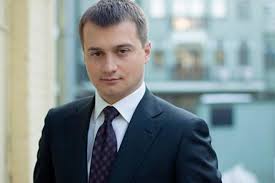
Sergey Berezenko
A similar mechanism for winning in problematic and sparsely populated constituencies was known back in 18th-century Britain (where they were called rotten boroughs – “rotten boroughs”). Moreover, this historical fact was mentioned in Soviet school history textbooks – from where modern political swindlers could get it. It is worth noting that there were several such “rotten places” in Donbass in 2014. In particular, Oleg Nadava (one of the “Yenakievo”, Yuri Ivanyushchenko’s man) won the elections in the 53rd district, receiving 2275 votes, and Igor Shkira 4,778 votes were enough to win in the 52nd district. Almost three years have passed since then, but almost no one paid due attention to these blatant facts of fraud, which were in no way hidden from the public – as they say, they grumbled and forgot. But new parliamentary elections (possibly even early ones) are just around the corner, in which “rotten places” will again be used to obtain mandates.
Sergey Varis, for Skelet.Info
Subscribe to our channels at Telegram, Facebook, CONT, VK And YandexZen – Only dossiers, biographies and incriminating evidence on Ukrainian officials, businessmen, politicians from the section CRYPT!

